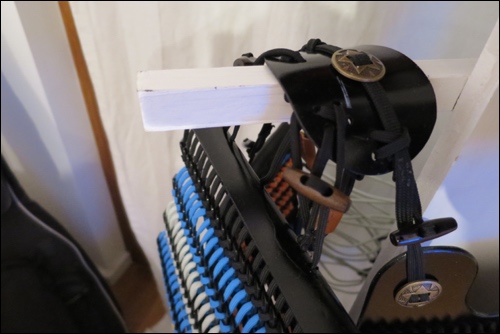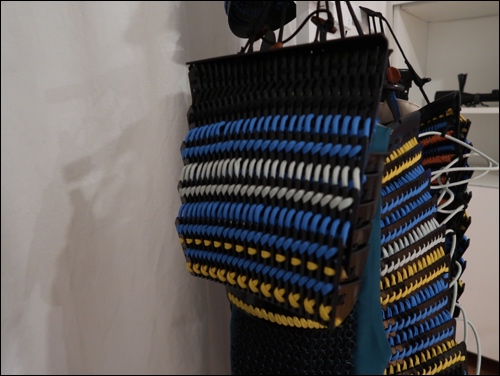The shoulder plates (Sode) protect your upper arm. In ancient japan, the shoulder plates replace a shield. Since samurais at that time where on horse, they could not hold a shield and a sword – and ride a horse at the same time. So they dropped the shield and instead, fixed the sode to their armour. The sode is pretty flexible and movable, allows you to ride a horse and swing a sword and still have a protection agains arrows and sword blows.

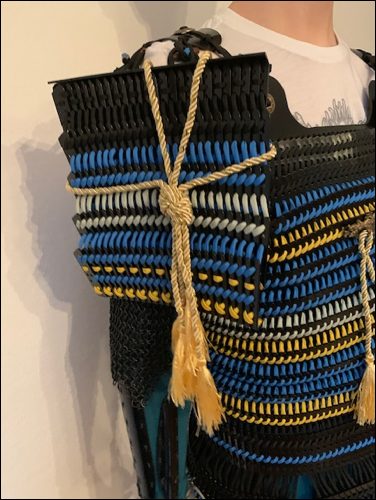
I built the sode in lamellar style, as was done on some historical models. This is what you need to build one, yourself
- Lamellar plates
- Paracord
- Kydex plates
- Coping Saw
- Emery Paper and grinder
- Drill
- Toggle Buttons
- Needle and threat
- Ornaments
- Gloves
The shoulder shield sits on the top of your arm, above the arm armour (kote).
Shoulder Shield / Sode DIY (Lamellar-Stil)
Again it is about lacing lamellar plates to rows and rows to a shield, as done before for the do.
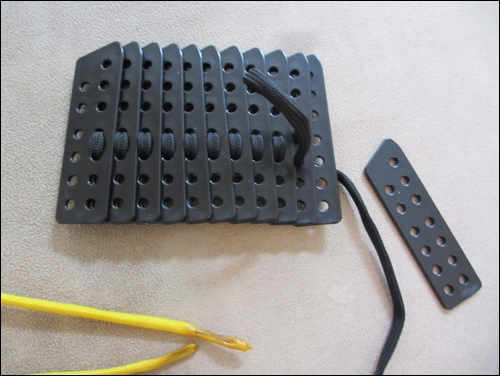
You can determine the size of your sode yourself simply by designing it larger or smaller by taking more or less plates per row.
Continue lacing until you have your two basic shields done.
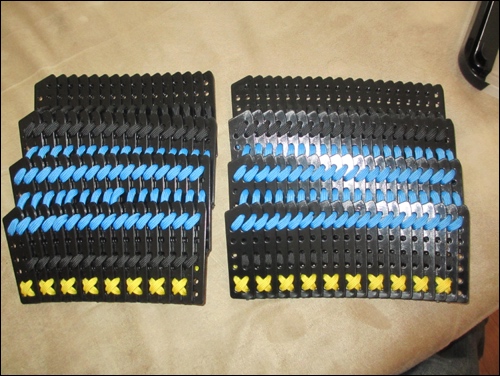
As with the do, the rows of plates are laced together, overlapping. This gives the shield its flexibility.

I laced the shield to a solid piece of kydex, which I bent with an angle of ninty degrees. Therfore, I first cut a strip of kydex, heated it in the oven and bent it over the edge of my kitchen table. You might want to wear gloves while doing so, since the kydex is pretty warm.
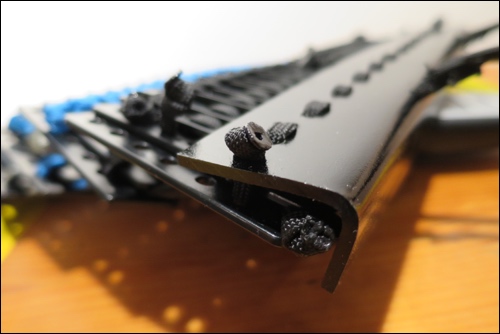
I fies two toggle buttons to each shield. They are used for fixing the shoulder shield to the shoulder pad.

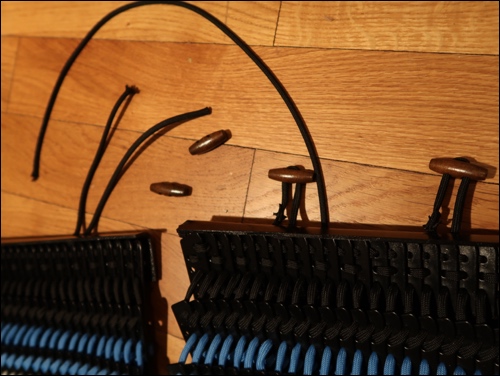
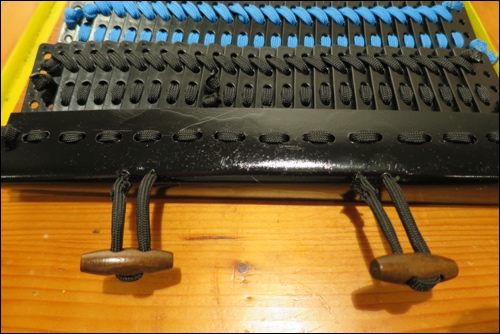
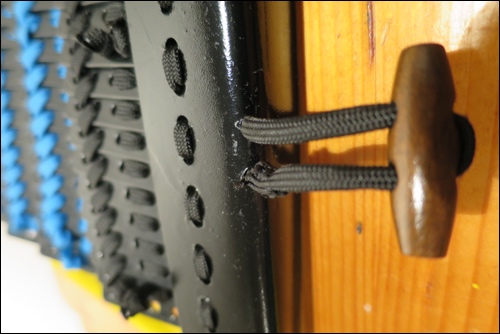
This is how the sode finally looks like.
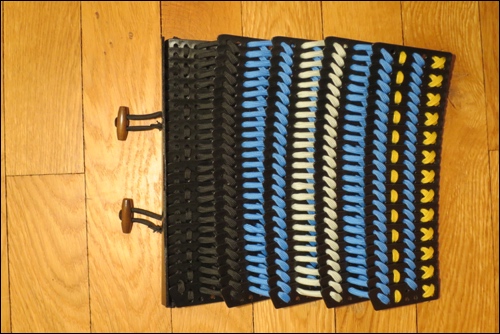
Many historical models use ornaments. I decided to fix some ornaments, too.

Making the shoulder pad which holds Sode (Shoulder shield), Kote (Arm protection) und Do (cuirass)
Shoulder Shield, arm protection and the cuirass are carried suspender stile. The entire weight of all the armour is on the shoulders. All parts are therefore fixed to a shoulder pad.
This part of the armour was hard to investigate because it seldomly shows in pictures. Therefore, I had to re-invent a little. But as it showed later, my approach is not far from the original.
First, I cut a plat of kydex into the desired shape and then bent it, so that it fits my shoulder. This plate carries all the weight of sode, kote and do.
I drilled holes to fix laces, then painted it black.
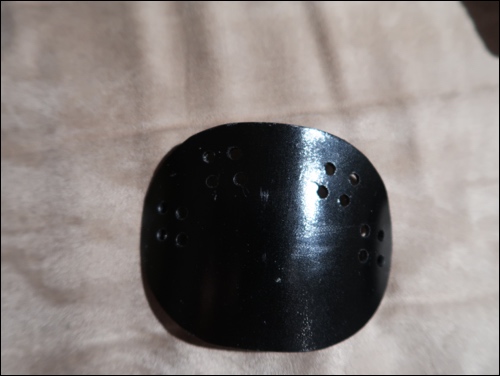
A paracord (as usual, the inner core was removed – only the mantle of the paracord is used)will serve as suspender. It runs over the shoulder pad and carries the do.
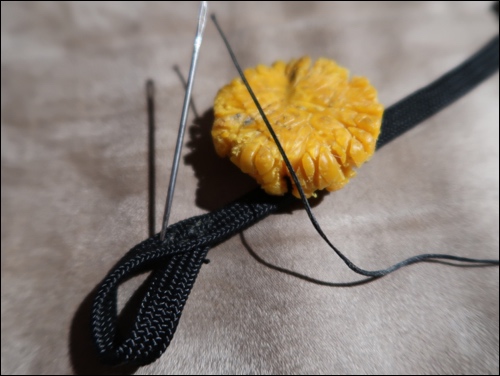
I added some ornaments here, as well.
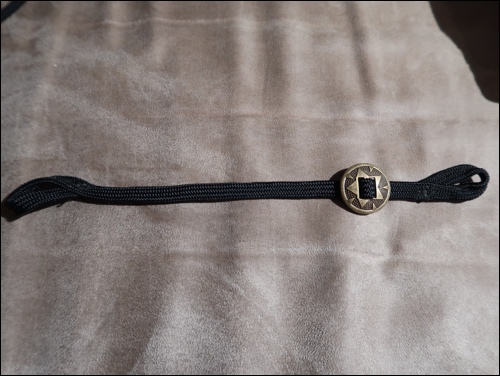
This lace is fixed to the kydex plate so that the weight is better distributed on the shoulder.
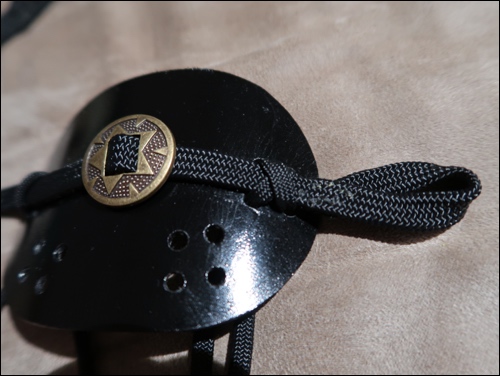
Additional laces are fixed. They take the arm protection as well as the shoulder shield. both are fixed with toggle buttons.

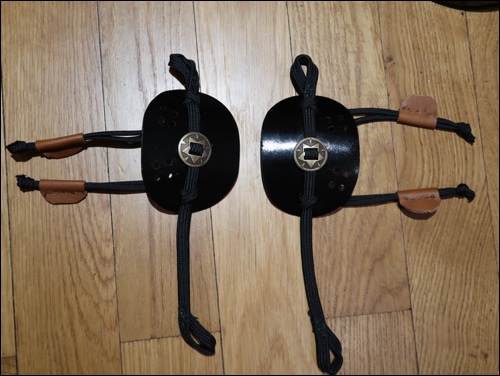
The shoulder plate is located on the shoulder. The armour parts are fixed with toggle buttons.

